5 Supply Chain Trends Happening Now
The world of supply chain management is exciting, challenging and rapidly changing. According to supply chain managers and executive leaders at a Fortune 50 company, these five trends are affecting the design and management of supply chains.
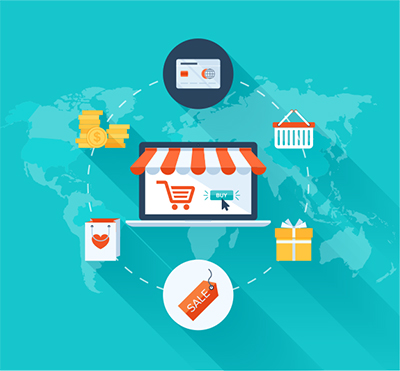
If the last 20 years have shown anything, it’s that the supply chain profession is in a state of constant change. Supply chain professionals who once viewed themselves as cost managers are now managing relationships with key stakeholders, the risks in their supply chains and are increasingly responsible for financial management. What’s more, new trends arise almost daily that affect how supply chains are designed and managed.
This article describes five trends that are affecting the design and management of supply chains right now. They have been identified through primary and secondary research, conversations with supply chain professionals—and, perhaps most importantly, working closely with executive leaders at a Fortune 50 company.
While it is unlikely that everyone in the supply chain community will ever agree on the impact of every trend, the five presented here will likely affect the supply chain world for the foreseeable future. Understanding them—and how they might have an impact on your organization—can mean the difference between demonstrating leadership and surrendering to forces beyond your control.
Trend No. 1
Supply chain talent management is becoming a strategic necessity

For some powerful reasons, the need to manage supply chain talent is becoming a strategic necessity. One major study, for example, found that having the right people involved when developing global sourcing strategies was the most important success factor of several dozen factors evaluated. Unfortunately, this same study found that a lack of access to people with the right knowledge and skills when pursuing global initiatives was the most significant barrier affecting global success. Few would argue against the notion that supply chains are becoming increasingly global and complex, something that affects the need for talent management.
Demographic changes are also having a profound impact on talent management. Almost 80% of top HR and IT executives at mid-size to large U.S.-based companies say that the threat of losing critical expertise is more of an issue today than it was five years ago, when the first of the baby boomer generation turned 65 and began to exit the workforce. And, 84% in that same survey say they sometimes or frequently do not have a successor in place when a top manager leaves.
The exodus of talent will result in the loss of something called “deep smarts.” Deep smarts represent organizational wisdom and knowledge that cannot be quickly replicated once it is gone. Compounding this demographic change is the fact that the generation behind the Baby Boomers is 11 million smaller.
But it’s not just demographics at play. Without question, the transition from tactical supply chains to a more strategic and global model requires a major re-tooling of personnel capabilities. An ever-expanding domain of supply chain responsibilities supports an obvious conclusion regarding the importance of human talent. And, corporations are under intense pressure to increase the number of diverse employees from historically underrepresented groups.
The shift from traditional, defined pension plans in favor of contributory 401(k) plans, where workers are responsible for their own investment decisions, may also affect the need for talent management. The reason: While 401(k) plans are attractive to corporations due to their lower costs and long-term liabilities, they are portable when an employee leaves an organization. That has the unintended consequence of encouraging job turnover because employees no longer risk losing accumulated pension years.
A final reason to focus on talent management is to avoid an affliction that affects far too many organizations: poorly engaged employees. Engaged employees are those who are involved in, enthusiastic about and committed to both their work and workplace. Gallup, the leader in public opinion polls, has concluded that employee engagement, at least in the United States, is somewhere around 30%. This is troubling because numerous studies have revealed a clear link between employee engagement and organizational health.
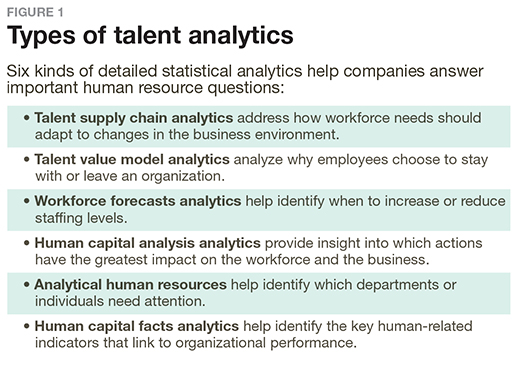
A large part of talent management will involve something called talent analytics, which is part of a broader category of techniques called predictive analytics. Talent analytics involves adopting sophisticated methods of analyzing employee data to ensure the highest productivity, engagement and retention of top talent. Kimberly-Clark, a company where employees once believed they had jobs for life, now uses talent analytics software to track and evaluate the progress of salaried workers. The career expectancy of laggards is now much shorter than in years past. Figure 1 presents various kinds of talent analytics—a topic that appears in the later section on predictive analytics.
A growing need to secure, engage and develop talent will demand the attention of supply chain managers. Fortunately, various ways are available for ensuring that an organization is a talent management leader rather than follower. The tactics and techniques presented in Figure 2 provide a well-rounded approach for acquiring and developing human assets—a need that will only increase in importance.
Trend No. 2
Increasing global risk is creating a greater need for supply chain risk management

An increasing number of studies by academics and consulting firms have concluded that supply chain risk is a growing, worldwide phenomenon. The annual Allianz Risk Barometer, a respected gauge of organizational risk, identified business and supply chain disruptions as the top global business risk in 2015 and 2016. In fact, six of the top 10 Allianz barometer risks are supply chain related. Executives disregard the growth in supply chain risk at their peril.
A study by the Aberdeen Group identified various reasons why companies need to embed supply chain risk management strategies, or SCRM, into their corporate culture. First, the need to protect an organization’s brand and sources of competitive advantage is a strategic necessity. Risk events have a nasty way of affecting corporate brand value quickly. The volatility of global markets creates greater risk exposure. A study by the International Monetary Fund concluded that the size of fluctuations in commodity prices has more than tripled since 2005 compared to the period from 1980-2005. Third, corporate and government mandates to institute and/or improve risk management and governance programs are only going to increase, forcing an emphasis on financial risk management. Fourth, supply chain risk will continue to increase as companies pursue sourcing and selling opportunities in emerging global markets. Finally, a constant pressure to improve shareholder value will encourage actions that bring greater risk exposure. These factors—individually and collectively—make an emphasis on SCRM a certainty.
While supply chain professionals have yet to come to an agreement on a standard or accepted approach for categorizing supply chain risk, one way includes four categories, each requiring its own strategies, approaches and responses (see below).
- Hazard risk includes events such as random disruptions, some of which are acts of nature. This category also includes accidents and fires. Other hazard risk disruptions involve malicious acts including crime, terrorism and product tampering.
- Financial risk includes internal and external financial challenges, particularly with suppliers and customers.
- Operational risk includes events primarily within the tactical supply chain space, including poor supplier quality, late deliveries due to port delays, safety issues and excessive inventory due to poor forecasts.
- Strategic Risk includes risks arising from decisions made by executive management or risks that are external to the organization but that place an organization’s continuance in jeopardy.
Figure 3 describes the current state of supply chain risk management identified during a Center for Advanced Purchasing Studies (CAPS Research) research project. The items in this table are the result of extensive research with leading companies. They reveal a current state where SCRM is primarily ad hoc and reactive rather than systemic and proactive. 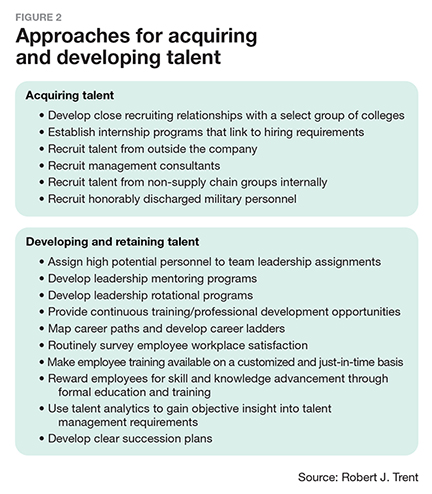
As risk management capabilities mature we expect company attitudes toward risk to shift away from risk avoidance and toward more thoughtful risk taking. We also expect risk management to become an embedded part of supply chain initiatives, including during the development of new products and commodity strategies. Furthermore, a risk management model that features “pockets of excellence” will move toward a company-wide risk excellence model. And, enterprise risk management (ERM) and supply chain risk management (SCRM) will increasingly overlap as supply chain risks become corporate-level risks.
Companies will also emphasize risk management efforts past tier-one suppliers and customers, something that occurs infrequently today. We also expect a new set of supply chain risk metrics to emerge, including value-at-risk and time-to-recovery metrics, as well as real-time, predictive analytic indicators. Total cost of ownership (TCO) models will also increasingly become part of the risk management process. As supply chain risk management continues to evolve as a discipline, we should also expect the development of a wide range of risk planning tools and approaches as third-party risk management solutions increasingly replace homegrown approaches. One thing is certain: betting on growth in the attention paid to supply chain risk is a winning bet.
Trend No. 3
Competitive pressures are forcing supply chain managers to become financial managers

Over the last 30 years, large North American and European multinational corporations have enjoyed one of the strongest periods of prosperity in modern economic history. But, that era appears to be ending. New rivals, including technology disruptors and non-governmental firms in emerging markets, are putting established incumbents on notice. These new entrants often play by different rules and demonstrate an agility and aggressiveness that many larger Western companies will struggle to match. That is bringing financial pressures to the fore across organizations—including the supply chain.
It is not hard to find respected voices making the case that supply chain managers need to act like financial managers. MIT’s Jarrod Goentzel and James B. Rice Jr. noted in the Wall Street Journal that supply chain management and financial management are intertwined, and that the time has come for supply chain professionals to assume a greater financial perspective. McKinsey researchers wrote in the Harvard Business Review that in an age of hyper-competition and reduced margins, companies must search for talent that understands how to manage costs and improve profits. Something we know for certain is that everything that supply managers do shows up on the balance sheet, the income statement and/or the cash flow statement. Supply chain management and financial management are intimately linked.
What does it mean to say that supply chain managers should think and act like financial managers? Within the supply chain space, it means focusing on five areas that have clear overlap between supply chain management and financial management.
Knowing more about your suppliers and customers than they likely know. Knowing more about your suppliers and customers than they likely know involves three assessments: financial ratio analysis, calculating the potential for supplier or customer bankruptcy and evaluating qualitative indicators. For instance, shipping early to customers due to a lack of orders is a qualitative indicator that might indicate supplier problems. Supply chain managers perform these three types of assessments to manage business risk and to eliminate marginal suppliers or customers early in the supplier and customer selection process.
“R” you ready to run with the big dogs? Few would argue that financial indicators that start with “return on” tend to be the “big dogs” of the finance world. The ability to show the impact of supply chain initiatives on corporate level indicators, rather than simply tactical or operational metrics, is evidence of speaking at an entirely different level. Modeling the impact of increased inventory turns on return-on-assets (ROA) using the DuPont Model, for example, is an indication that supply chain managers appreciate the language of finance. And, any supply chain manager who can show the impact of her group’s initiatives on return on invested capital (ROIC) will find herself on the corporate fast track.
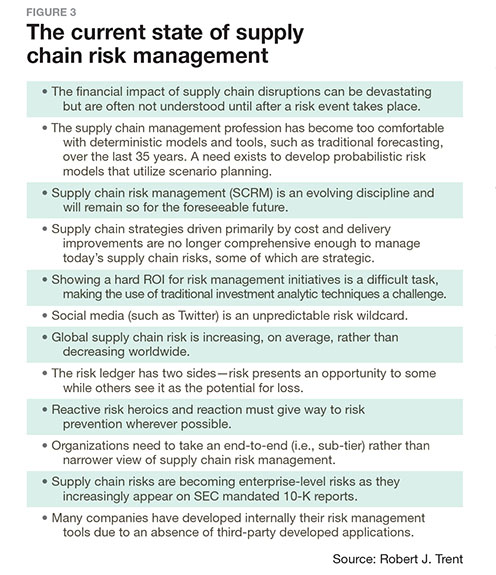
Expenses are bad, investments are good. Most supply chain initiatives are presented in terms of expenses. And of course, the prevailing wisdom among managers is that expenses are to be avoided wherever possible. The challenge from a financial perspective is to reframe supply chain expenses so they are presented as investments, which are viewed more positively among executive managers. Framing a supply chain initiative, such as a supplier development project, as an investment opportunity requires an understanding of investment analysis techniques, including payback, net present value (NPV) and internal rate of return (IRR). Changing how these projects are framed will affect how executive managers view them.
Manage working capital the right way. To finance managers, improvements to the cash conversion cycle (defined as days inventory outstanding + days receivables outstanding – days payables outstanding) is largely about extending the payables period to suppliers. Unfortunately, this usually harms, sometimes irreparably, the supplier-buyer relationship. Enlightened managers know that a less contentious way to manage working capital from a financial perspective involves managing inventory from a system-wide perspective. Anyone can decide not to pay suppliers in a reasonable time.
Don’t make decisions with incomplete information. The ability to arrive at better supply chain decisions requires total cost models that rely on financial and other performance data. These models may examine the total cost of equipment over a life cycle; calculate a Supplier Performance Index (SPI) that calculates the total cost of poor quality; or identify the total landed cost of material and components sourced from suppliers. Recognizing that unit cost never equals total cost is at the heart of whatever total cost model is used.
Supply chain professionals must appreciate the language of finance. And, they must understand how to apply financial tools and techniques to support better decision making and risk management. These professionals must also demonstrate the value they create by showing how supply chain initiatives affect important corporate indicators.
Trend No. 4
Pressure to increase top-line growth supports greater innovation sourcing and collaboration

Innovation sourcing is not likely a familiar term to readers. It involves the process of capitalizing on external supply chain innovation and capabilities with the explicit goal of growing top line revenue. This differs from an environment where supply chain personnel focus their efforts almost exclusively on reducing costs.
The logic behind innovation sourcing is straightforward. Without question smart people work at other companies as well as your own. And, external R&D at those companies can create considerable value, particularly when a third party is a technical specialist, while internal R&D works to capture that value. It is myopic to believe that innovation has to originate internally for a company to profit from it. Companies should develop a business model where they profit as others use their intellectual property, while at the same time they pursue others’ intellectual property when it advances their own business needs.
A logical question becomes how to gain advantage from innovation sourcing and collaborative relationships, where all parties share in the risk and rewards. Perhaps the most powerful way is to engage suppliers and customers in something called early involvement. Early involvement is the process of relying on suppliers and customers early, physically or virtually, to provide support during strategic planning, demand and supply planning, continuous improvement projects, project planning and new product, process and technology development.
Early involvement often involves external participation on teams. This involvement can be a powerful way to tap into the expertise of third parties. Research findings are clear that teams that rely on supplier input and involvement when the task warrants involvement are more effective in their task, on average, than teams that do not involve suppliers. We also know that teams that include suppliers as participants report a variety of improvements that relate directly to better performance.
Identifying the appropriate suppliers to involve early can be a challenge. Figure 4 presents a simple but effective tool (simplicity is a virtue here) for assessing early involvement candidates. Because early involvement opportunities are usually limited, special care must be taken to manage this process and any related issues. An example of one such issue is how to manage intellectual property that is developed jointly. 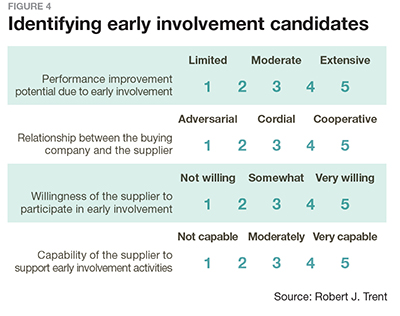
As companies search for new growth, they also cannot ignore the importance of what is largely an untapped opportunity: the receipt of preferential treatment from suppliers. Oftentimes, this treatment is specific and not available to other firms, particularly competitors. Make no mistake, preferential treatment—like trust and respect—is earned rather than given. How an industrial customer engages with its suppliers can mean the difference between receiving game-changing innovation that leads to top-line growth versus watching from the sidelines as others prosper.
One way to ensure that a customer becomes preferred is to use reverse scorecards, such as the Supplier Satisfaction Survey, to measure supplier attitudes toward their customers. The premise of a reverse scorecard is to identify ways to continuously improve a buyer’s performance with the objective of earning preferred customer status. The reality is that few firms routinely survey their suppliers, making this an untapped opportunity.
Customers that put forth the effort to understand the needs of their suppliers and then respond accordingly should be better because of that effort. The challenge becomes one of replacing subjective analysis and conjecture with an objective understanding of supplier needs and wants. The bottom line is that a need to tap into supplier innovation that enhances top-line growth is best supported by relationships that are trust-based, collaborative and explicitly consider a supplier’s needs.
Trend No. 5
A need to understand and influence events is accelerating the use of predictive analytics

Without question, predictive analytics is a hot topic at the corporate and academic level. Also known as Big Data, business intelligence, data analytics and business analytics, predictive analytics uses techniques from data mining, statistics, modeling, machine learning and artificial intelligence to analyze current data in order to make predictions about the future.
While predictive models and techniques, such as Statistical Process Control (SPC) and supplier and customer bankruptcy predictors, have been around for years, the increasing relevance of predictive analytics coincides with the amount of data being captured from individuals (for example, from on-line transactions and social networks) and sensors (the Internet of Things), as well as the availability of cost-effective processing power, be it Cloud or Hadoop-based. Without question analytics tools are more rigorous today, particularly in their ability to glean insights from unstructured data, such as videos. Traditional predictive tools and techniques rely largely on deterministic models and structured data sets.
Predictive analytics is part of a hierarchy of analytics that address some important questions. The hierarchy consists of the three distinct levels outlined below.
- Descriptive analytics use data aggregation and data mining to provide insight into the past and answer: “What has happened?” Descriptive analysis (i.e., statistics) summarizes raw data and makes it something that is interpretable by humans. They are analytics that describe the past.
- Predictive analytics use statistical models and forecasting techniques to understand the future and answer: “What could happen?” These analytics are about understanding the future. Predictive analytics provides companies with actionable insights based on data.
- Prescriptive analytics use optimization and simulation algorithms to provide guidance on possible outcomes and answer: “What should we do?” These analytics go beyond descriptive and predictive analytics by recommending one or more possible courses of action. Prescriptive analytics are relatively complex to administer, and most companies are not yet using them in their daily course of business.
While predictive analytics will be applied across all business disciplines, supply chains will benefit greatly from this technology. The following examples comprise a small set that illustrates where supply chain-related areas are capitalizing on Big Data.
- Telematics involves the branch of information technology that deals with the long-distance transmission of computerized information. Using sensor technology, truck fleet owners can monitor the real-time performance of transportation vehicles, including location, engine performance, fuel consumption, driver habits and predicted mechanical issues. Remote telemetry is also being used to gather real-time data, such as predicting remotely the need to replenish raw materials at customer locations.
- Wearable technology involves technology that is worn by a human to monitor human vital signs. One application in the supply chain space is to monitor brain waves to identify if vehicle drivers are falling asleep.
- Delivery tracking involves real-time monitoring of freight shipments and deliveries to predict early, on-time or late supply chain deliveries.
- Smart sensors, as part of the Internet of Things (IoT), will feature sensors that collect and communicate data on a wide range of conditions. Equipment will no longer be maintained or repaired on a maintenance schedule; instead, maintenance will be based on predicted need. In the rail industry, trains will arrive in yards for maintenance with pre-positioned yard crews that already have an understanding of the maintenance requirements of the engine and rail cars.
Weather analytics helps predict supply disruptions, forecast effects on future demand, analyze the effect on fuel prices and sense transportation hub congestion to dynamically re-route to less congested locations.
Most companies are asking themselves, “We have all of this data, why don’t we do something with it?” Predictive analytics represents their attempts to “do something with it.”
Get in front of trends
Understanding the macro trends that are occurring within the supply chain space is an essential component of supply chain success. The trends presented here are real, they are happening now and they will affect the domain of supply chain management for years to come. A failure to get in front of these trends places an organization at risk—particularly when competing against others that truly understand the changes affecting their supply chains.

Article Topics
Magazine Archive News & Resources
Latest in Materials Handling
Registration open for Pack Expo International 2024 Walmart chooses Swisslog AS/RS and software for third milk processing facility NetLogistik partners with Vuzix subsidiary Moviynt to offer mobility solutions for warehouses Materials Handling Robotics: The new world of heterogeneous robotic integration BSLBATT is looking for new distributors and resellers worldwide Lucas Watson appointed CSO for Körber’s Parcel Logistics business in North America Hyster recognizes Dealers of Distinction for 2023 More Materials HandlingSubscribe to Materials Handling Magazine

Find out what the world's most innovative companies are doing to improve productivity in their plants and distribution centers.
Start your FREE subscription today.
April 2024 Modern Materials Handling

Latest Resources










